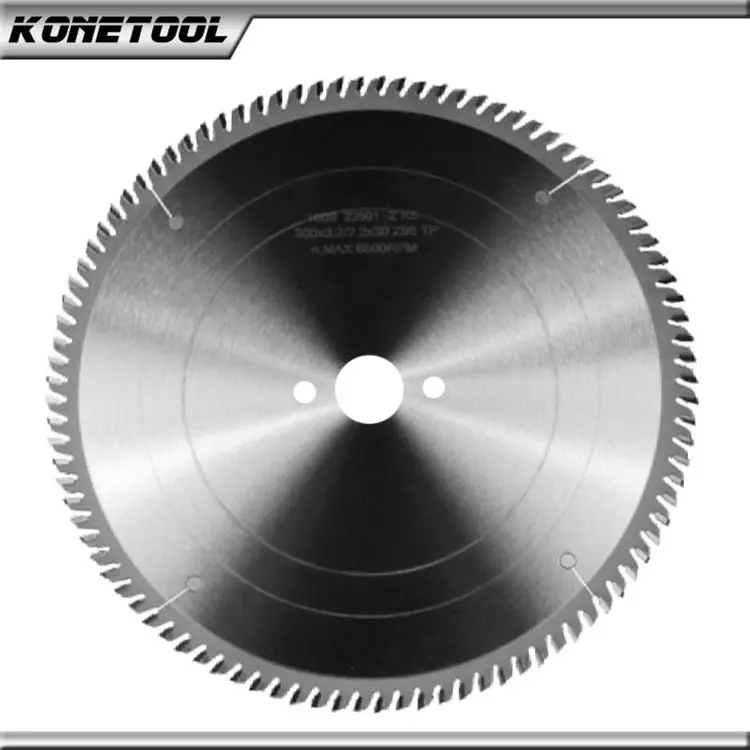
Circular saw blades are an essential tool for woodworkers, carpenters, and DIY enthusiasts. They come in different sizes, materials, and tooth configurations, and choosing the right blade can make a big difference in the quality of your cuts. In this article, we will discuss what circular saw blades are, the different types available, and how to choose the best one for your needs.
What are Circular Saw Blades?
Circular saw blades are a type of cutting tool that is used with circular saws to cut through wood, metal, plastic, and other materials. They consist of a circular metal plate with teeth that rotate around a central arbor, and they come in different sizes and tooth configurations. Circular saw blades are powered by an electric motor or a battery, and they can be used for different applications, depending on the type of blade.
Types of Circular Saw Blades
There are several types of circular saw blades, each designed for specific applications. Here are some of the most common types:
Rip Blades: Rip blades are designed for cutting with the grain of the wood, making them ideal for ripping lumber. They have fewer teeth than other types of blades, which makes them more aggressive and faster at cutting.
Crosscut Blades: Crosscut blades are designed for cutting across the grain of the wood, making them ideal for cutting plywood, MDF, and other composite materials. They have more teeth than rip blades, which makes them slower but produces a smoother finish.
Combination Blades: Combination blades are designed for both ripping and crosscutting. They have a mix of rip and crosscut teeth, which makes them versatile and suitable for a variety of applications.
Plywood Blades: Plywood blades are designed specifically for cutting through plywood and other composite materials. They have many fine teeth, which produce a smooth finish without splintering the material.
Metal Cutting Blades: Metal cutting blades are designed for cutting through metal, including aluminum, copper, and brass. They have fewer teeth than wood blades and are made of different materials, such as carbide, to withstand the high heat generated by metal cutting.
Diamond Blades: Diamond blades are designed for cutting through hard materials, such as tile, stone, and concrete. They have diamond-coated teeth, which makes them more durable and suitable for tough applications.
Choosing the Right Circular Saw Blade
Choosing the right circular saw blade is essential for achieving the desired results. Here are some factors to consider when selecting a circular saw blade:
Blade Diameter: Circular saw blades come in different diameters, ranging from 4 1/2 inches to 12 inches. The blade diameter should match the size of your saw and the type of material you will be cutting.
Tooth Count: The tooth count refers to the number of teeth on the blade. Blades with fewer teeth are more aggressive and faster at cutting, while blades with more teeth produce a smoother finish.
Tooth Configuration: The tooth configuration refers to the shape and angle of the teeth. Different tooth configurations are designed for specific applications, such as ripping or crosscutting.
Material: Circular saw blades are made of different materials, such as carbide, high-speed steel (HSS), and diamond. Carbide blades are more durable and suitable for tough applications, while HSS blades are less expensive and suitable for light-duty applications.
Coating: Some circular saw blades come with a coating that can improve their performance and durability. Coatings can reduce friction and prevent rust and corrosion.
Price: Circular saw blades come in different price ranges, so it is important to choose blades that fit within your budget. However, it is important to remember that investing in high-quality blades can save money in the long run by reducing the need for frequent replacement.
Tips for Maintaining Circular Saw Blades
Maintaining your circular saw blades is important for ensuring their performance and longevity. Here are some tips for maintaining your blades:
Clean the Blades: After use, clean the blades with a blade cleaner or a solvent to remove any debris or buildup. This will improve their cutting performance and prevent rust and corrosion.
Sharpen the Blades: Over time, the blades will become dull and will need to be sharpened. You can sharpen the blades yourself using a sharpening stone or a file, or you can take them to a professional to have them sharpened.
Store the Blades Properly: When not in use, store the blades in a dry, cool place to prevent rust and damage. You can use blade protectors or a dedicated blade storage box to keep them organized and protected.
Use the Right Blade for the Job: Using the right blade for the job will not only improve your cutting performance but also prolong the life of your blades. Using the wrong blade can cause damage to the blade and the saw, and can result in poor quality cuts.
Conclusion
Circular saw blades (KoneTool) are an essential tool for woodworkers, carpenters, and DIY enthusiasts. Choosing the right blade for the job can make a big difference in the quality of your cuts, and maintaining your blades is important for ensuring their performance and longevity. Whether you are ripping lumber, crosscutting plywood, cutting through metal, or working with hard materials, there is a circular saw blade that is suitable for your needs. By considering the blade diameter, tooth count, tooth configuration, material, coating, and price, you can select the best blade for your project and achieve the desired results. With proper maintenance and care, your circular saw blades can provide years of reliable and efficient cutting performance.